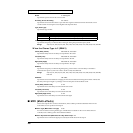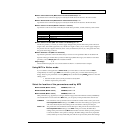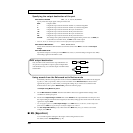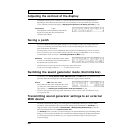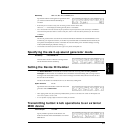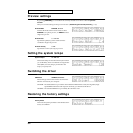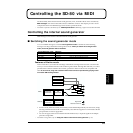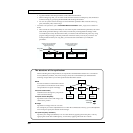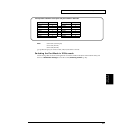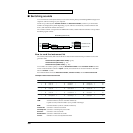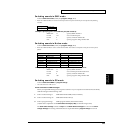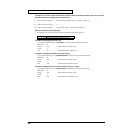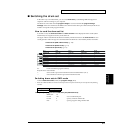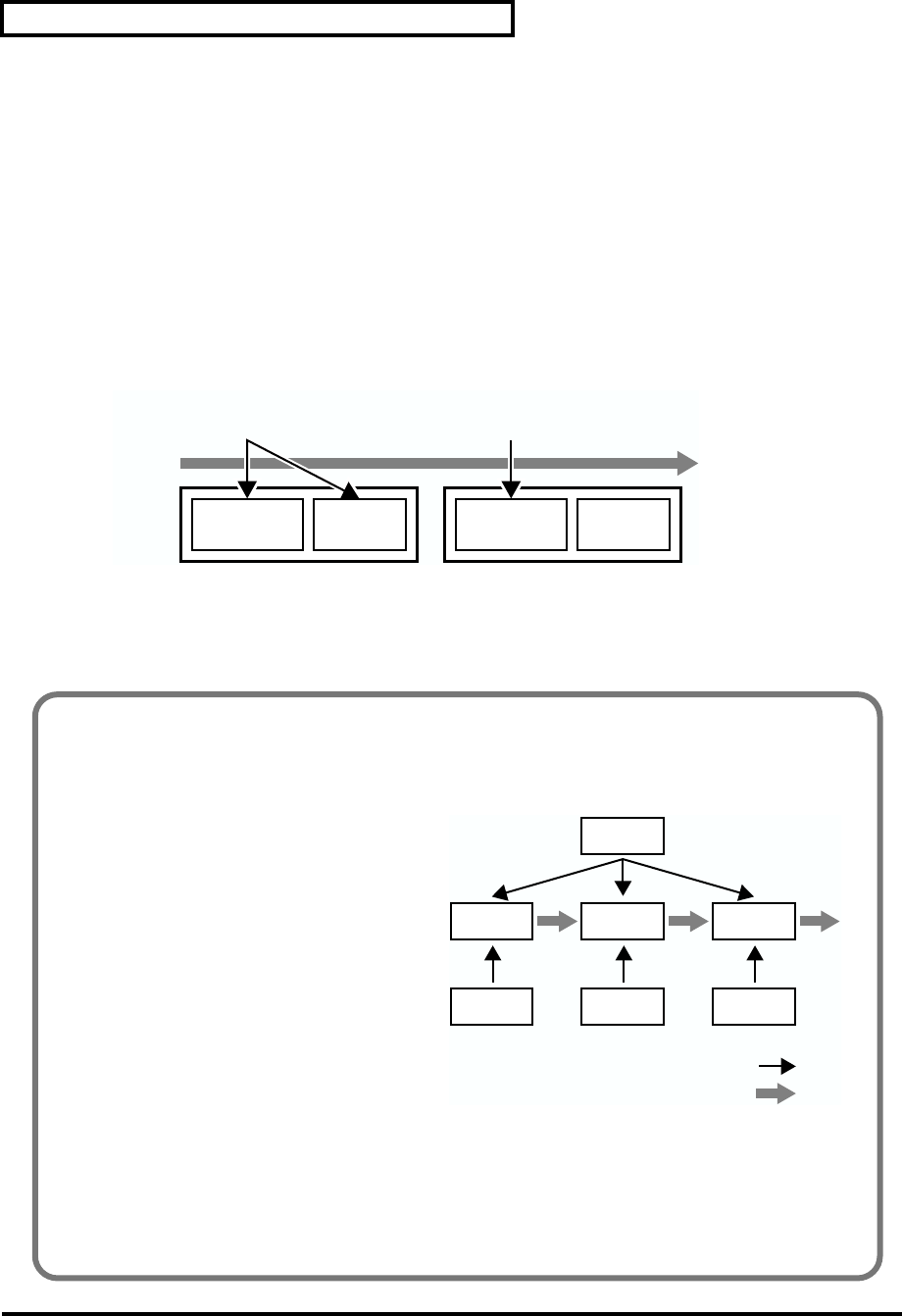
54
Controlling the SD-80 via MIDI
•A greater number of the Part parameters can be edited from the SD-80.
• When creating song data, you can select sounds from the Classical/Contemporary/Solo/Enhanced
sound sets simply by specifying the Bank MSB/LSB and Program Number.
• You can use system exclusive messages to control the Patch parameters that create the sound; e.g.,
pitch, TVF (filter), LFO, and envelope.
* For details on the parameters, refer to “Each Multi-Effects Parameters” (MFX_E.pdf) on the included CD-
ROM.
• These sounds are selected individually for each of the 32 parts. Unlike the Part parameters, the sound
(instrument) parameters belong to the sound (not to the Part), meaning that their settings will be
overwritten by the newly selected sound when you switch sounds from the front panel or by using
program change messages. (The Part parameters will remain as they were set.) If you want to use
sound parameters within your song data, you must select the sound before you modify the
parameters.
fig.5-01c
Part
parameters
Song data
(time)
Sound A
parameters
Part
parameters
Sound B
parameters
Specify the sound A parameters
and part parameters at the
beginning of the song
Transmit a program change
number during the song to
switch to sound B
The structure of the synthesizer
When controlling the sound parameters, it is important to understand the structure of a conventional
music synthesizer (oscillator, TVF, TVA, envelope, LFO). We recommend that you understand the
following concepts before you use the operations described in this section.
fig.5-01d
WAVE
Provides for selection of the PCM waveform
(wave) that is to form the basis of the sound,
and specifies how its pitch will change.
TVF (Time Variant Filter)
Determines how the frequency components
of the sound will change.
TVA (Time Variant Amplifier)
Specifies how the volume will change, and
set the stereo position.
Envelope
Specifies how change will occur over time.
For example if you want to adjust the time over which the sound attacks or decays, you would adjust the
TVA envelope to specify the desired volume changes.
LFO (Low Frequency Oscillator)
Specifies cyclic change (modulation). You can create vibrato by applying LFO to the pitch, “wah” by
applying LFO to the TVF cutoff frequency, or tremolo by applying LFO to the TVA volume.
filter
(TVF)
Pitch
envelope
LFO
level
(TVA)
oscillator
(WAVE)
TVA
envelope
TVF
envelope
Audio signal
Control signal



